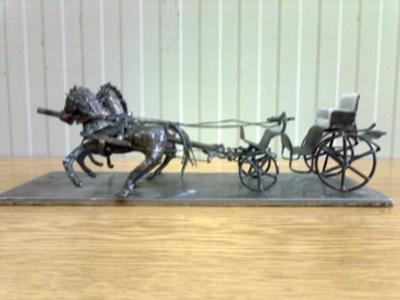|
Stud-welding:How to use it for maximum gain.SOLUTIONS with Effective, Powerful Advice
Stud-welding is a general name used to describe a whole series of processes. These are designed to attach by welding a metal stud or fastener to a workpiece. The task is performed without filler metal and with or without gas or flux shielding.
Pressure is applied as needed. The actual Stud-welding process employed may make use of arc, of resistance, of friction or of percussion. Sometimes the equipment is standard and only special tooling is employed to accommodate gripping and handling of studs. In this page we will deal essentially with arc Stud-welding. This is considered a reliable process, widely used in most different industries. These include both consumer oriented, like automotive or appliance. But also heavy duty manufacturing, like bridge or structure construction. Shipbuilding and sturdy equipment fabrication use it, for applications requiring mounting, assembling, anchoring and fastening.
If you did not yet find what you need, why not typing your question in the following Search Box?
Advantages:
Limitations:
Arc Stud-welding process One stud, gripped in the welding gun, is positioned to contact the workpiece. The automatic welding cycle, with preselected parameters, is initiated upon triggering its start mode. Heating for welding is produced when the stud is lifted-off the workpiece surface and an arc is established between stud end and workpiece.
When the preset arc cycle times out, current is interrupted and the stud is pressed against the workpiece to complete the weld. Some molten material on both heated surfaces intermix and the excess is expelled as flash, contained by a ceramic ferrule. Stud-welding guns can be portable by hand or fixed to a stationary machine, depending on production needs. Power sources can be of two different types. Regular arc Stud-welding uses Direct Current (DC) power supply. These are with high open circuit voltage and constant current output with drooping characteristic. Welding time is around 1 second per weld. The other type of power sources, give the name to a similar but different process known as Capacitor Discharge Stud-welding. As the name implies, energy is stored in capacitor banks and discharged almost instantly through the stud. It is preferred for small studs to be welded to thin workpieces. Damaging of the back side finish (plating, paint, polish or coating) is limited. Studs may present a small protrusion for facilitating arc start. Arc initiation may use an initial gap or be based on initial contact or on drawn-arc (like regular Stud-welding). Welding time is measured in a few milliseconds per weld. Although using much higher currents than that needed for other arc welding processes, the flow time is much shorter. The duty cycle for Stud-welding is therefore much lower than that for other arc processes, but the load peaks on the power grid may be quite disturbing. When welding low carbon steel or stainless steel the stud is connected to negative polarity. For aluminum welding, the stud is positive. For repetitive work and mass production, studs may be presented through an automatic feeder to both portable and fixed guns. An essential feature of equipment for Stud-welding is the Control Unit. It takes care of the proper weld timing and of contact making and breaking of power from the source during the sequential operations. The Control Unit can be a separate device or its functions can be included in the power source casing. Settings are to be preselected according to the job at hand. Gas shielding or solid aluminum flux (washers or pins) may be used with carbon and stainless steel studs. The purpose is to de-oxidize the weld metal and to stabilize the arc. Aluminum studs do not use flux but may need inert gas shielding. Ceramic ferrules are used once, and then broken to be removed and discarded. Their shape is conform to the application. Their function is to vent gases and to form the flash expelled from the joint in a regular shape. They also concentrate the arc and protect from heat surrounding materials, if necessary. Special qualification requirements are spelled out in specifications like: ANSI/AWS D1.1/D1.1M:2010 ANSI/AWS D1.6/D1.6M:2007
ANSI/AWS D1.2/D1.2M:2008 ANSI/AWS D1.5M/D1.5:2010
ANSI/AWS C5.4-93
A shorter version (10 pages) is available for downloading from: An Article on Underwater Friction Stud Welding was published (11) in Issue 69 of Practical Welding Letter for May 2009. An Article on Percussion Welding was published (11) in Issue 94 of Practical Welding Letter for June 2011. To receive at no cost every issue of PWL as it is published, please subscribe. You will also receive a bonus book on PRACTICAL HARDNESS TESTING MADE SIMPLE. The following Video is from a commercial company. It is referred to as an informative illustration. No recommendation or endorsement are intended.
Any questions or comments or feedback? Write them down and send them to us by e-mail. Click on the Contact Us button in the NavBar at top left of every page.
Horse Carriage
To reach a Guide to the collection of the most important Articles from Past Issues of Practical Welding Letter, click on Welding Topics.
For any one of the Process pages of this Section, click on the underlined item:
POWERED BY: Click on this Logo NOW! Watch - The Video: and also
Copyright (c) 2006, 2007, 2008, 2009, 2010, 2011, 2012, 2013, 2014, 2015, 2016, 2017  Stud-welding is one more method from the arsenal, in the hands of prepared professionals. It may provide the best solution relative to alternatives, in specific well defined cases.
|




